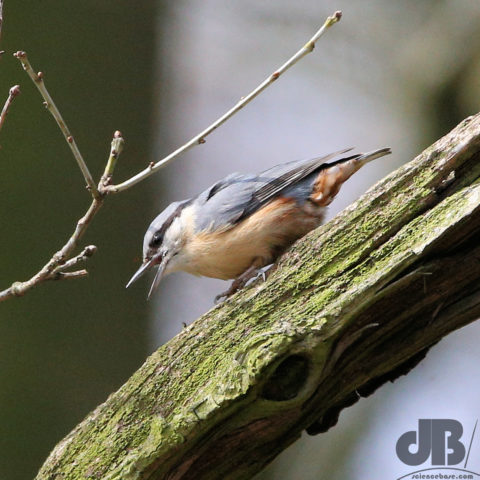A memoir of Linton to Grassington, North Yorkshire
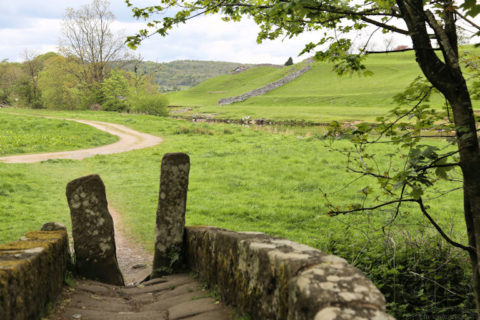
A lot of water under the bridge
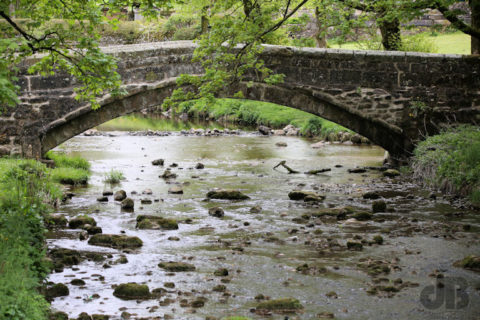
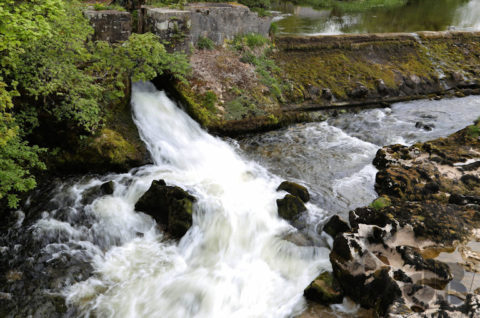
Crossing the River Wharfe from Linton with its Limestone falls, towards Grassington
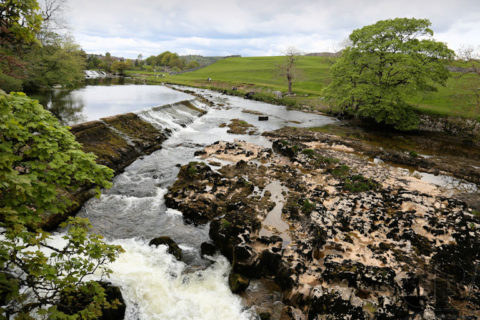
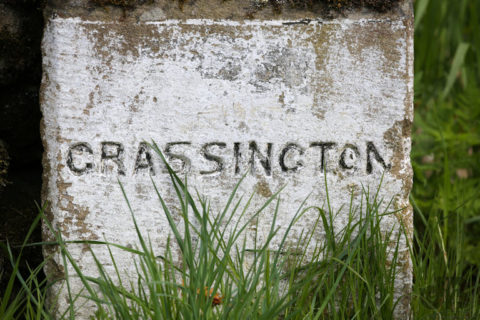
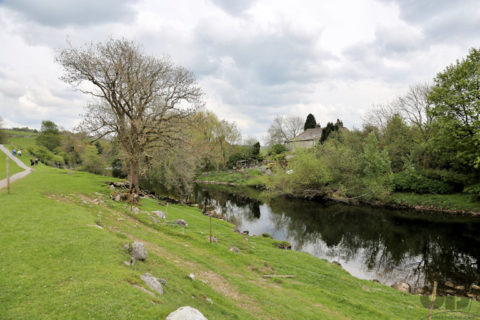
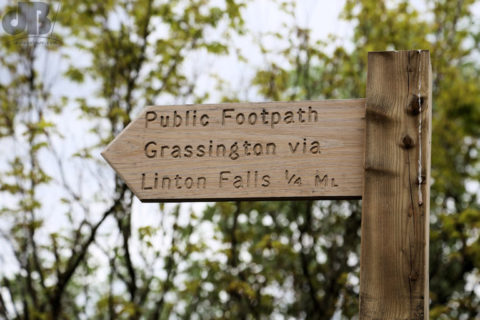
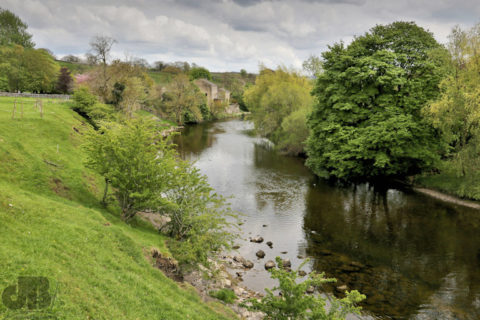
Cross Reflection from SE 00472 63306
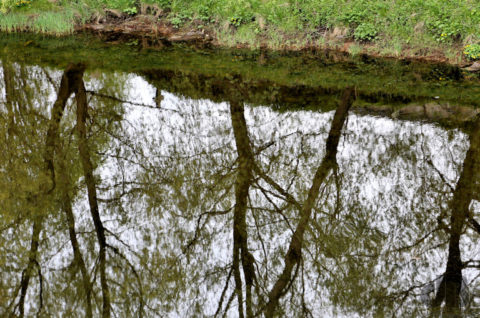
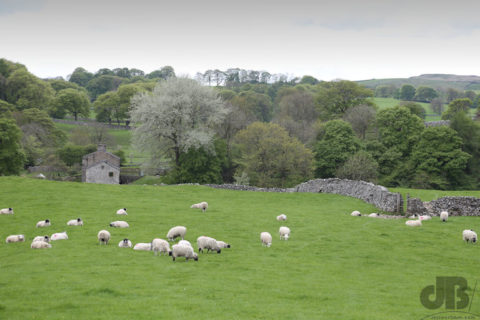 Flying Free
Flying Free
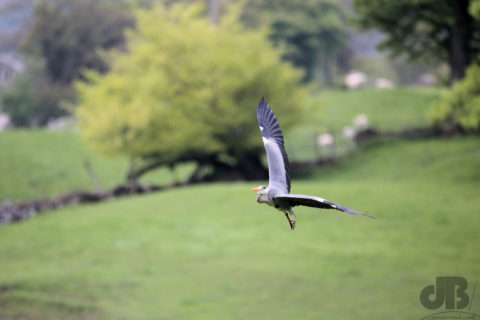
36.2055 years in science communication
A memoir of Linton to Grassington, North Yorkshire

A lot of water under the bridge


Crossing the River Wharfe from Linton with its Limestone falls, towards Grassington





Cross Reflection from SE 00472 63306

 Flying Free
Flying Free

There are older traditions but Reach Fair stretches back a long way. It was in the year 1201 AD that the annual Reach Fair was inaugurated. The Burgesses of Cambridge were granted a Royal Charter by King John that year to hold such a fair. It begins at midday with a proclamation that bars inappropriate activity and heralds the activities and festivities that will take place. The proclamation is then followed by the throwing of coins for the children. Anyway, it still happens, they only cancelled it twice in the whole of its history and that was in the 17th Century when there was something of a skirmish taking place in this part of the world, the English Civil War.
It was a gloriously sunny and warm English countryside Bank Holiday Monday afternoon (a first this century?), so what better place to be without too much travelling? Amazing the number of friends who agreed with our plan!
More photos and the fun of the fair in the Sciencebase Flickr album.
The picturesque village of Reach (Reche) is on the edge of the Fens East of the university city of Cambridge at the North end of Devil’s Dyke (6th Century) and about 2.4 km West of Burwell. Reach was important in early Anglo-Saxon and Viking times with goods such as the chalky stone known as Clunch being loaded at its hythe (wharf) for transport into the fen waterway system from as early as 1100 AD. Reach Lode is a Roman canal, still visible and still navigable.
The village name has also been spelt Reche, derived from the Old English word raec and means “place on the raised strip of land”.
It was our annual village Fun Run, 7 kilometres along village roads and countryside. The first back, as ever was Finn Johnson. I believe his time was 23 minutes, 57 seconds. Also, as ever, I took a few snaps…more photos in my Facebook Gallery.
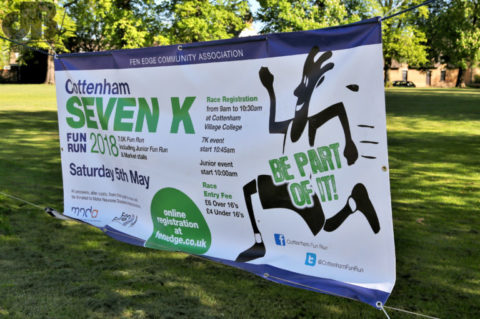

For me as a kid, you couldn’t beat a good space book, if it was stars and planets and the almost science fiction world of the Space Shuttle (in the early 1970s it was still a dream). I say that but a good shark book would come close, or better still one that had dolphins and whales too. Then again, one with magnets and motors, circuits and pulleys might occupy my time and at least in my pre-teens I had a chance of playing with magnets, but not swimming with dolphins. But, if I remember rightly, those subjects were not the top of the list. Dinosaur books were the top of the list.
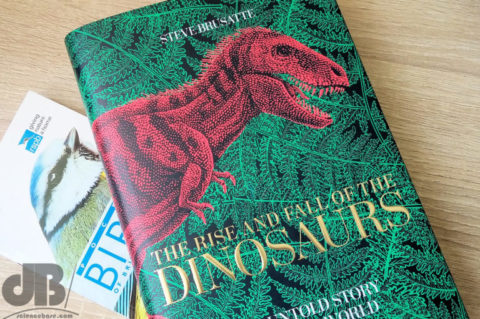
Landing on my desk today is Steve Brusatte’s latest tome and it goes by the rather enticing title of “The Rise and Fall of the Dinosaurs: The Untold Story of a Lost World“. What more could my pre-teen self want? Well, admittedly it is mostly words and far fewer pictures than I would’ve preferred at that age, but these days I can cope with lots of words. Brusatte is one of the world’s leading palaeontologists and he evolves the engrossing story of the rise and demise of the dinosaurs from the dominant place in life on earth to their end 66 million years ago.
Of course, Chapter 8 reminds us, to my delight and my current sciencey preoccupation, that the dinosaurs never really went away. Indeed, the descendants of the theropod dinosaurs of which Tyrannosaurus rex is perhaps the most famous and infamous example, are alive and well to this day and flapping their feathered wings all around the world. All ~10,500 species of them…the birds.
Brusatte has discovered and named 15 new species of dinosaur and led groundbreaking (literally?) studies of the rise and fall of these animals.
 Everyone uses emoji in their communications now, right? Maybe not. I suspect that a lot more people know about simple emoticons (smilies) than know what you’re suggesting when you post the eggplant (aubergine) emoji. Moreover, despite proclamations that emoji are somehow the modern version of hieroglyphics, they’re really not.
Everyone uses emoji in their communications now, right? Maybe not. I suspect that a lot more people know about simple emoticons (smilies) than know what you’re suggesting when you post the eggplant (aubergine) emoji. Moreover, despite proclamations that emoji are somehow the modern version of hieroglyphics, they’re really not.
For a start, I’m not even sure that the Ancient Egyptians had aubergines…although they were cultivated in southern and eastern Asia in prehistory and the first recipe for them appeared in a document around 544 CE. But, more importantly, try saying the following phrase unravelled from ancient hieroglyphics with nothing but emoji and trapping each nuance and losing none of the subtlety and philosophy of the phrase:
Do not be proud because you are wise! Consult with the ignorant as with the learned!
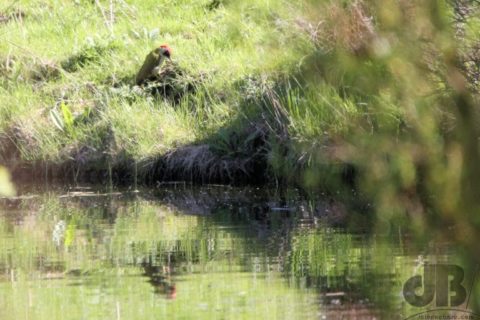 There were reports of a migrant Spoonbill on passage at RSPB Ouse Fen (Needingworth, Cambridgeshire). So, first day after the rains, I went looking. Didn’t see any Platalea leucorodia (had seen a pair at RSPB North Warren, Aldeburgh, in May 2017 though). However, the Whitethroats (Sylvia communis) were out in force (usually arrive 2-3 weeks after the other warblers) as were the European Green Woodpeckers (Picus viridis).
There were reports of a migrant Spoonbill on passage at RSPB Ouse Fen (Needingworth, Cambridgeshire). So, first day after the rains, I went looking. Didn’t see any Platalea leucorodia (had seen a pair at RSPB North Warren, Aldeburgh, in May 2017 though). However, the Whitethroats (Sylvia communis) were out in force (usually arrive 2-3 weeks after the other warblers) as were the European Green Woodpeckers (Picus viridis).
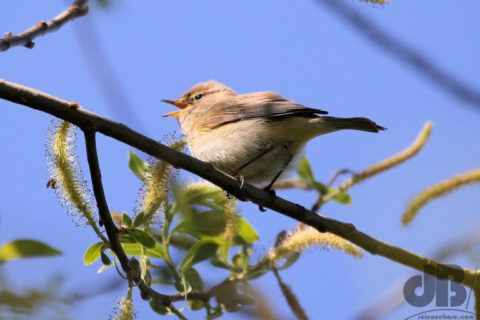
There were also lots of Chiffchaff, Blackcap, Willow Warbler (all seen and heard) and Reed and Garden Warblers (heard but not seen), a Wren, Jay, Little Grebe, Grey Heron, Robin, Long-tailed Tits, a couple of Buzzards (Buteo buteo).
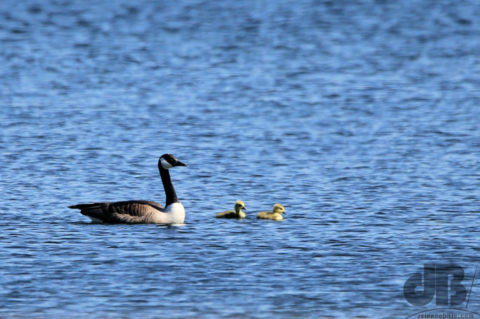
I didn’t sight the Marsh Harrier one fellow walker had seen. But, there was also a Turtle Dove turring in a grove and a Cuckoo cuckooing somewhere on the patch. Saw neither. However, I did see a Cuckoo perched on an overhead wire on the drive home, just outside Rampton.
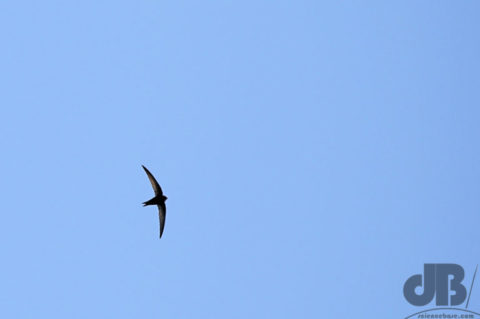
The Mute Swans and Coots are still on their nests, but the Canada and Greylag Geese are chugging around the lakes with goslings in their flotillas now. No terns, but several Swallows, a couple of Housemartins, and my first sighting of the year of a Swift (Apus apus)
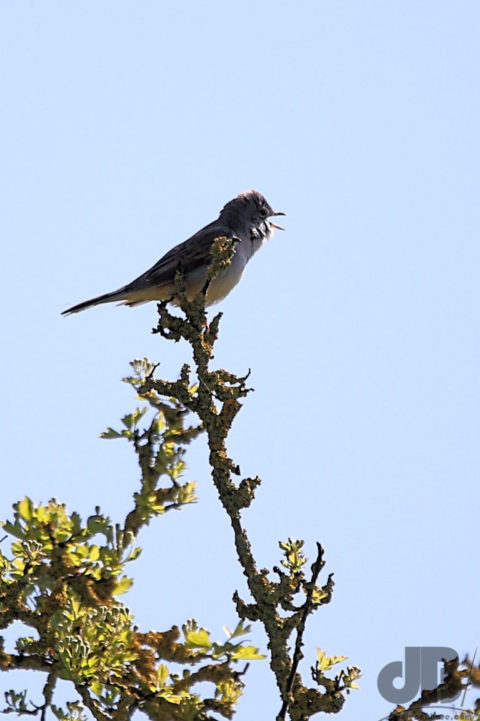
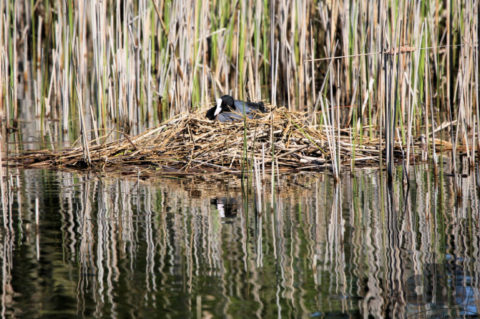
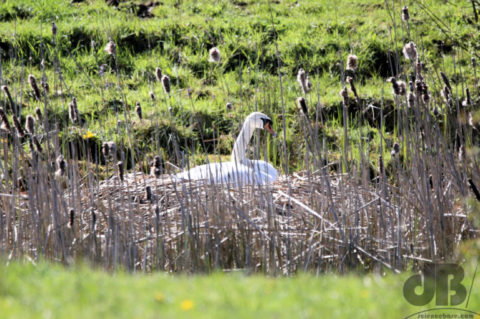
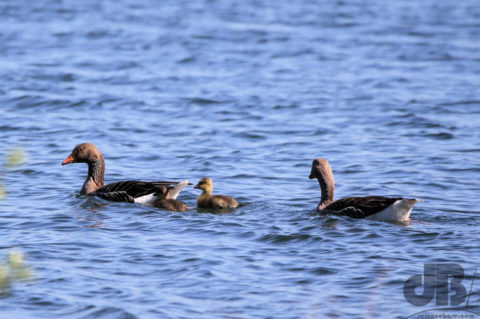
Above photographs by David Bradley in order from top to bottom:
European Green Woodpecker
Chiffchaff
Canada Geese and goslings
Swift
Whitethroat
Coot
Mute Swan
Greylag Geese and goslings
TL:DR – The Good Times chords for the chorus, according to Nile Rodgers himself when he plays it live, are Em7, E7sus4, Em11 at the seventh fret, and A13 at the fifth fret. That Em11 is an A7sus4 at the fifth fret on the original recording. The verses are Em7 and Asus4, A.
My band (C5) are busy rehearsing for upcoming pub gigs and a couple of parties. We often jam on the CHIC song Good Times just because it’s a classic to funk out to. But, a couple of weeks ago we made the decision to arrange it properly and add it to the band’s repertoire. Of course, being an uberfan of Nile Rodgers I wanted to get it just right. I thought I thought I had the four chords he uses…been jamming on them for years.

Simple.
Except it was not so simple.
All the online chords charts and tutorials online have something akin to that progression although they seem to jump from the Em7/E7sus4 to an Asus4 (I had that as a much jazzier and more fitting Dmaj7) and then an A13. In fact, attempting to get closer and closer to the harmonies Nile is playing you can hear that the Em7 and the E7sus4 are correct, as is the A13, but that bridging harmony is off by a note or two. Turns out he’s using an Em11 to get him from the main riff to the resolved chord on the fourth beat (and adding a few grace notes in between). Nile spells it out in detail in the video below, from 6’30”. At least that’s the case when he plays it live. That Em11 is an A7sus4 at the fifth fret on the original recording. The verses are Em7 and Asus4, A.
In addition, as is well known to CHIC aficionados but not necessarily to some funk guitarists who strum across the width of the fretboard with each stroke or use the three high strings only, Nile rarely does that, he grabs triads with his pick and bounces from the higher notes in chunks to the bass notes, chunking and chopping in sixteenths with lots of left-hand muting and plenty of percussive gaps. It sounds like funk, but it’s jazz, man, jazz…
So, the chord chart should look really like the one you see above. If you’ve not been playing it like that, you’ve not been playing it right. Basically, cycles around all four chords in the choruses, but lays back a lot and shuttles between the Em and the A for the verses.
And, here’s a quick burst on my Tele, demo’d in my home studio:
This song has an almost 40-year history and was one of the first to be sampled and sampled and sampled again from Rapper’s Delight and on and on. No the wonder he calls his guitar The Hitmaker.
Here’s Nile explain how he plays Good Times and a whole bunch of other songs
If you enjoyed this Classic Chord, check out the series, which includes the proper chords for Tom Sawyer by Rush, The Rolling Stones’ Brown Sugar, Times Like These from Foo Fighters and many more.
Second mix of my demo, this time with a MIDI track of Nard’s bassline
A newly restored, speed-corrected, augmented audio of film shot in New York City in 1911.
The print from which this video has been made was in mint condition, apparently. The original was recorded by the Swedish company Svenska Biografteatern on a trip to the USA.
A vast drinking water reservoir in the English county of Rutland, about half way between Peterborough and the home of the pork pie, Melton Mowbray, is home to the first Western Ospreys (Pandion haliaetus)Â to breed in England for 150 years. A translocation programme means that these raptors are now breeding at Rutland Water having been settled there, migrated (naturally) to Africa (Senegal, the tracking devices show) and then returned in the spring.
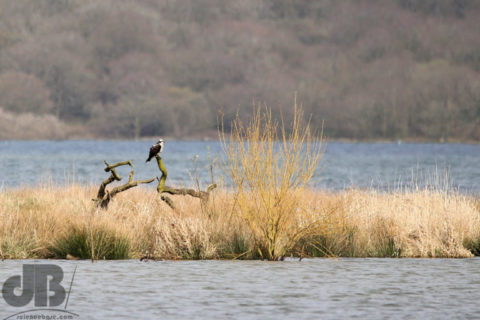
In paying the birds a visit, we made the mistake of heading to the Wildlife Trust’s Rutland Water Nature Reserve in Egleton, near Oakham, paying our money (to a worthy cause, of course) to get on to the reserve only to be told that the nest site was way over the other side, a three-mile walk in fact. Well, we made the best of the visit and took in a short walk on the Reserve and could just about see the female on her nest from one of the hides, but she was far too far away and I was disappointed to not get a good shot even with a 600mm zoom.
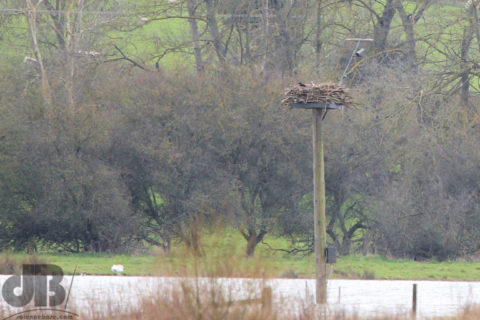
Other visitors we spoke to during our walk though mentioned having “fallen for that” entry fee trick before (there is public access and public footpaths aplenty around the reservoir). They suggested heading back out on to the main road in the car and parking up near the railway viaduct at Manton. We did so and could see the male perched not far from the nest on a dead tree branch protruding from the water. He was still some distance away, so not a great shot, but half the distance at which I had attempted to photograph the nest from the Reserve itself. The female could be seen occasionally bobbing and turning her head on the nearby nest.
The project has a live webcam over the nest, so you can get a good close-up view of the birds, which at the time of writing are brooding three eggs, I believe. The female is called Maya and the male has the name 33. I just browsed to the webcam and saw the 33 arrived to relieve Maya from brooding duties, presumably so she could get some food and exercise, here’s a screen grab from the webcam
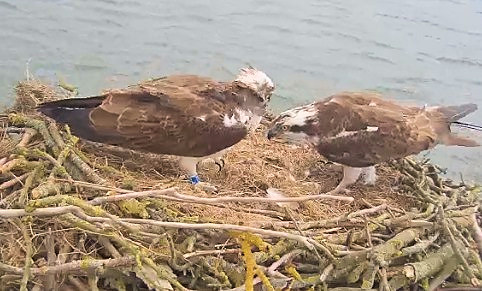
Looking something akin to a small, tree-surfing kingfisher or a tiny woodpecker, the acrobatic Nuthatch (Sitta europaea) will scoot up and down the bark head first, in a manner unlike any other bird. Certainly it doesn’t creep endlessly upwards like the Treecreeper.
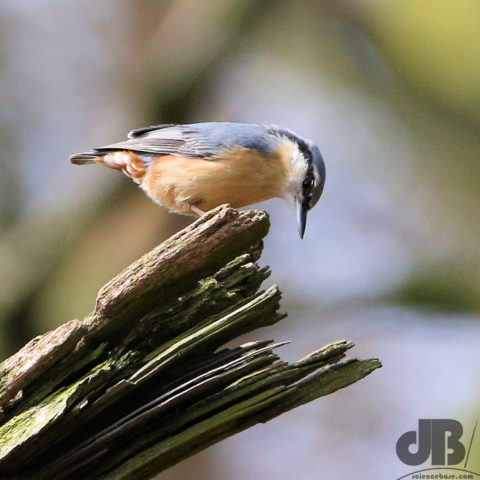
The Nuthatch will pluck small insects and grubs from the bark of trees for food, but will also find seeds and kernels and wedge them in a crevice smashing them open with its beak, hence the hatching of nuts from whence its name originates. It has a variety of calls from a pew, pew, pew to a pwee pwee, by way of a ka-ka-ka.
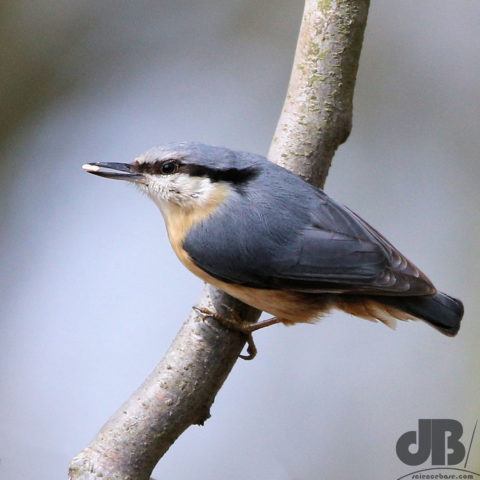
You will see them on garden bird feeders and often hanging around the visitor centres of nature reserves, anywhere with an abundance of insect life, decent craggy-barked trees, and a seed supply.
